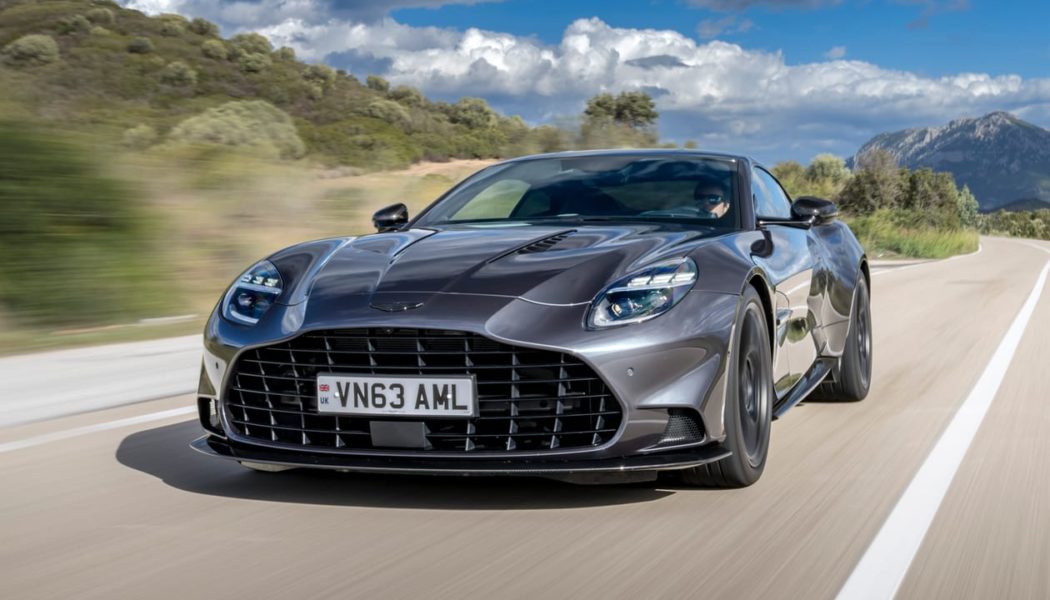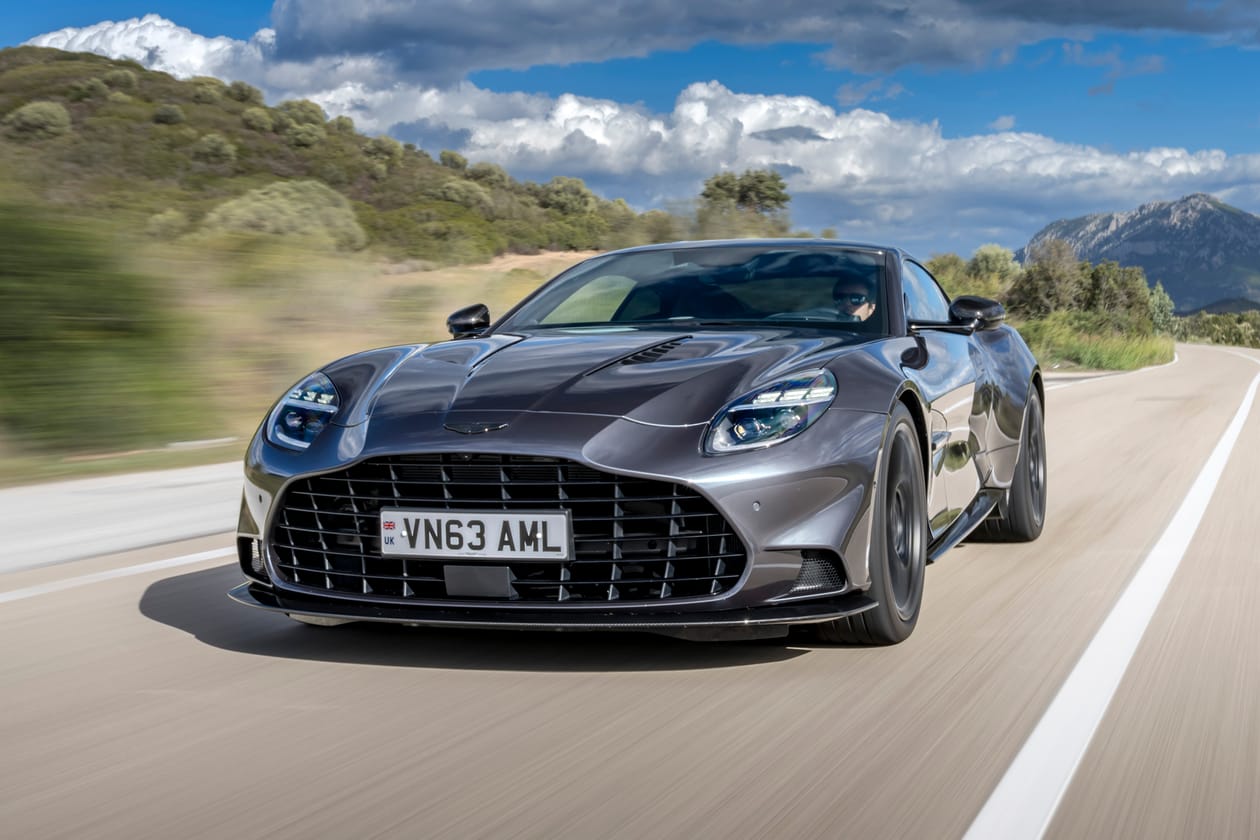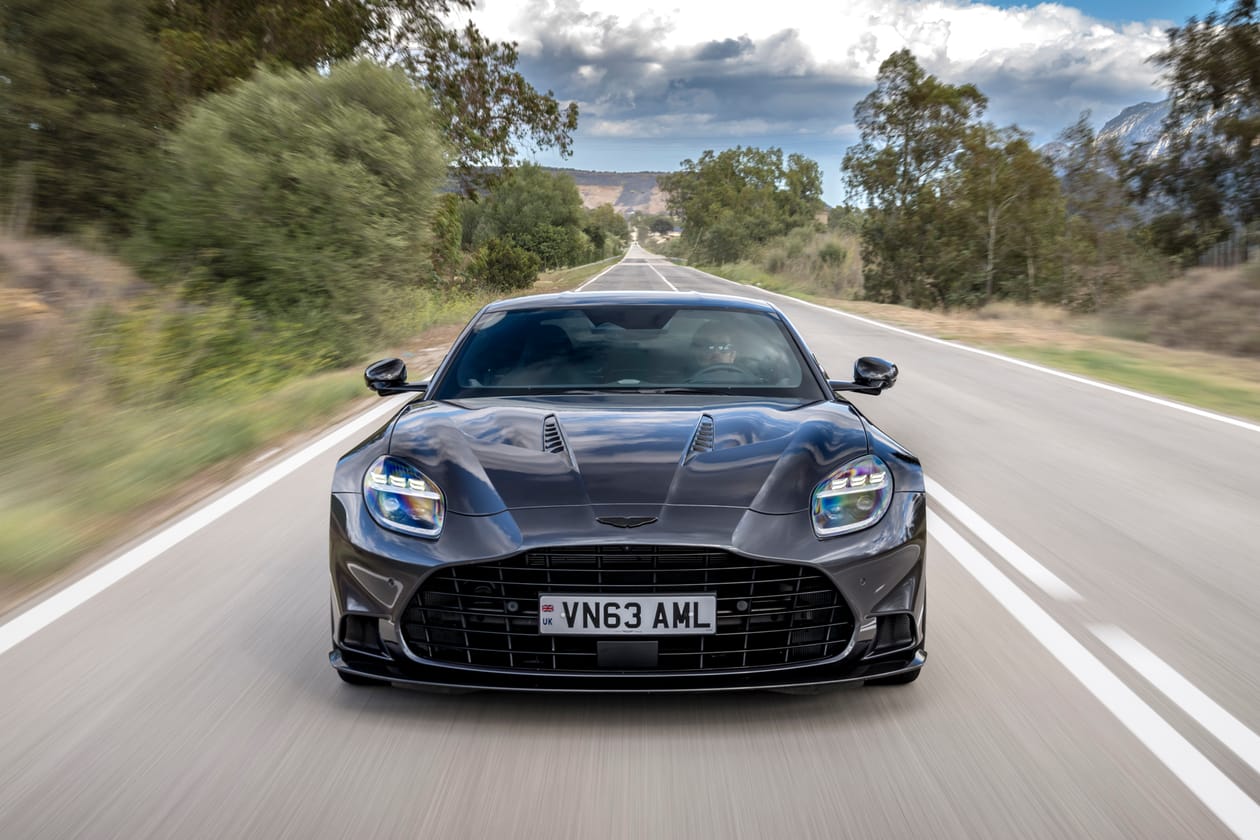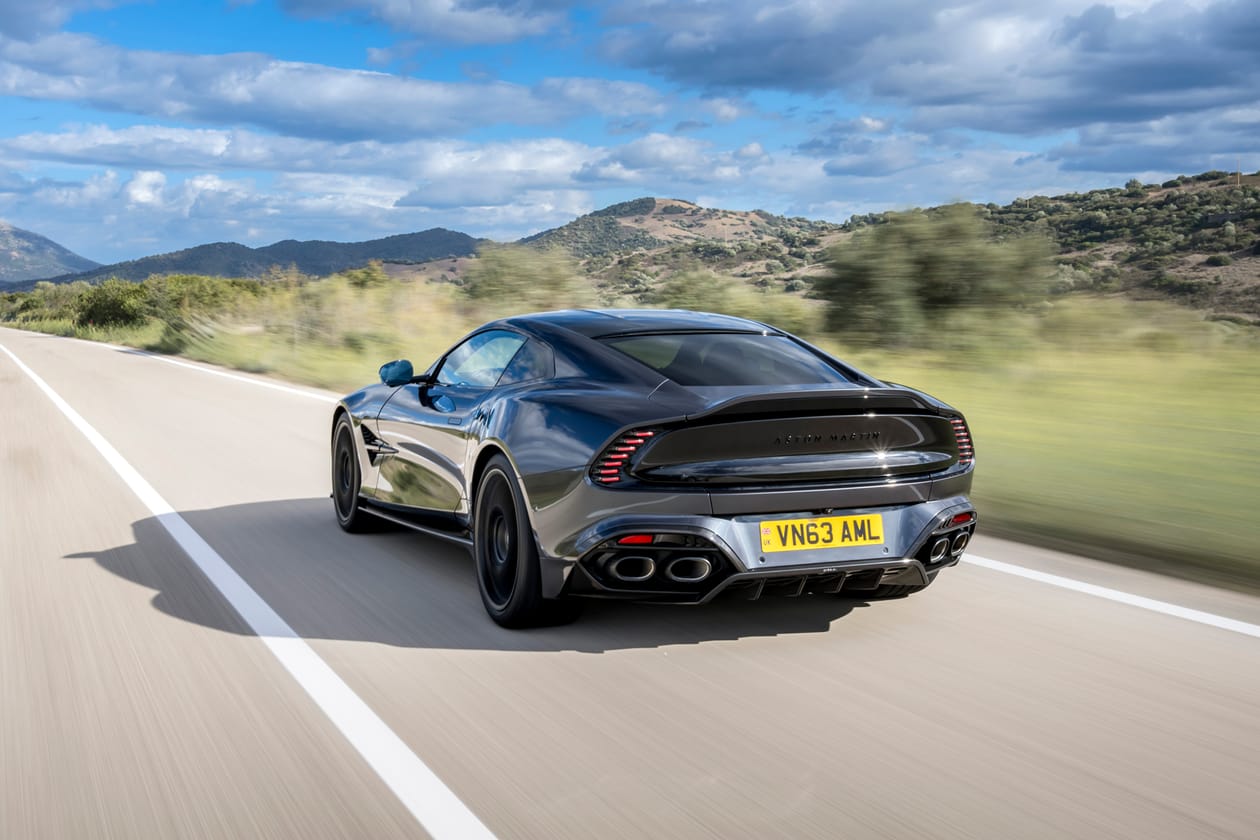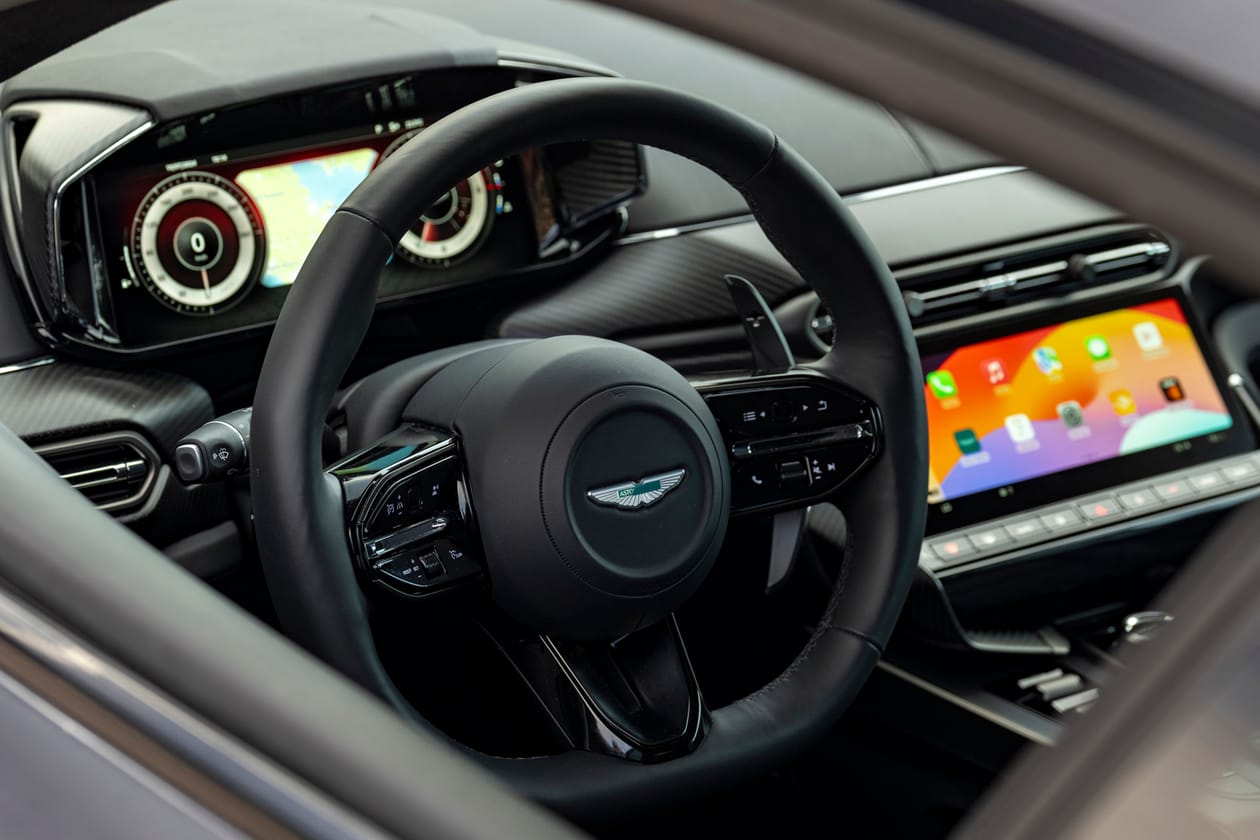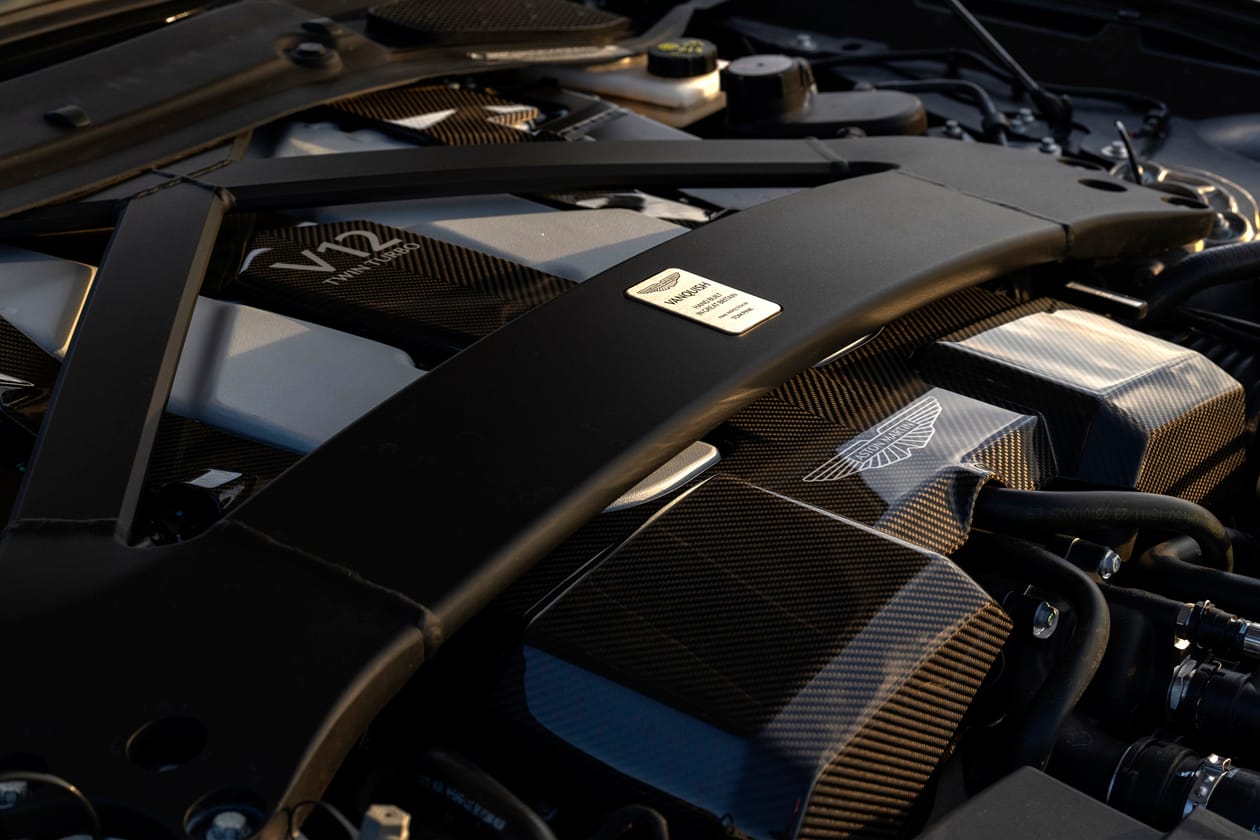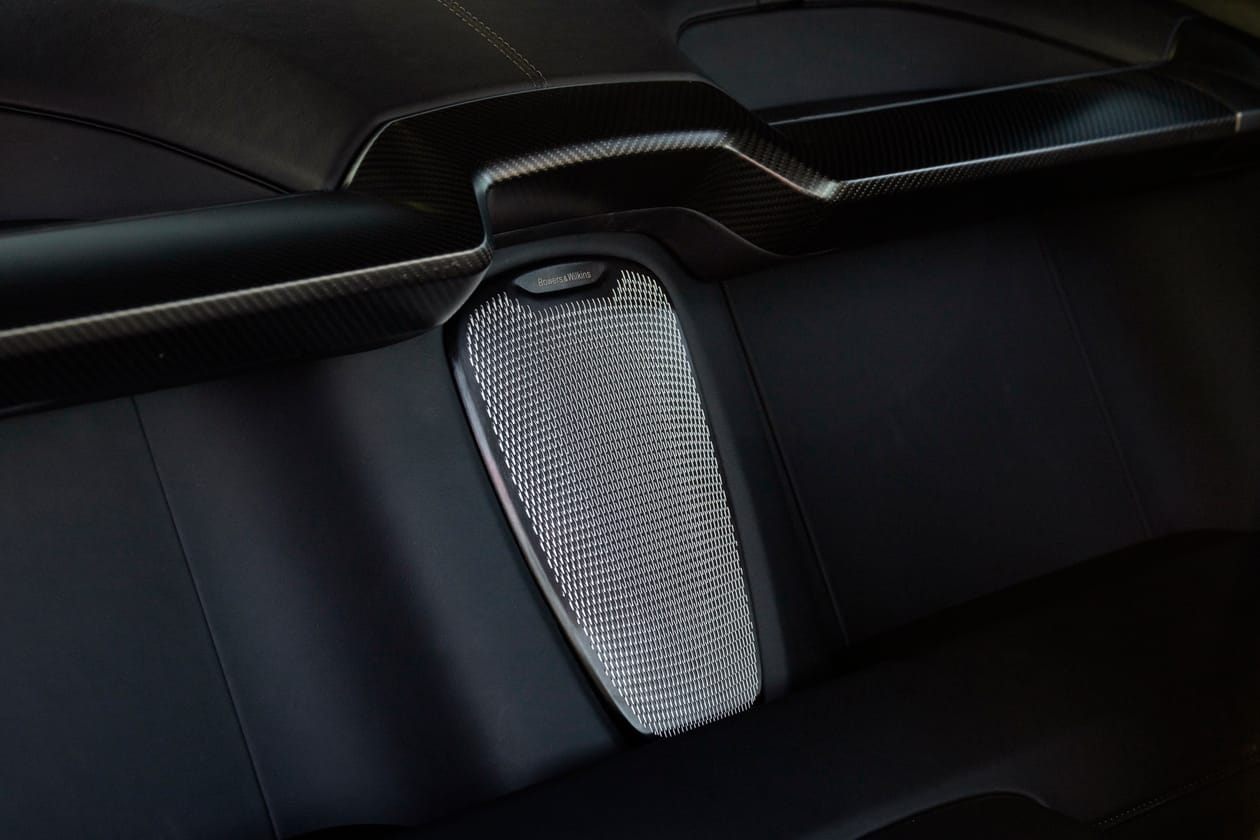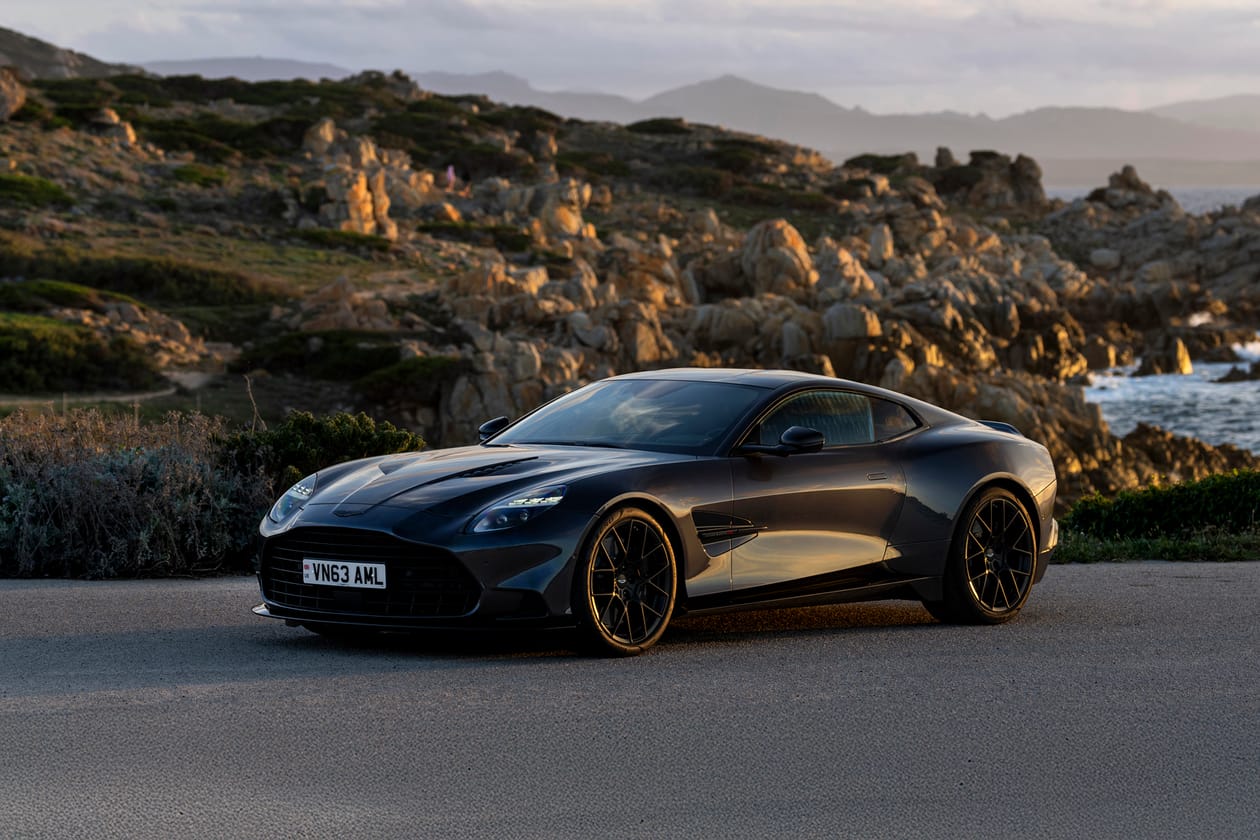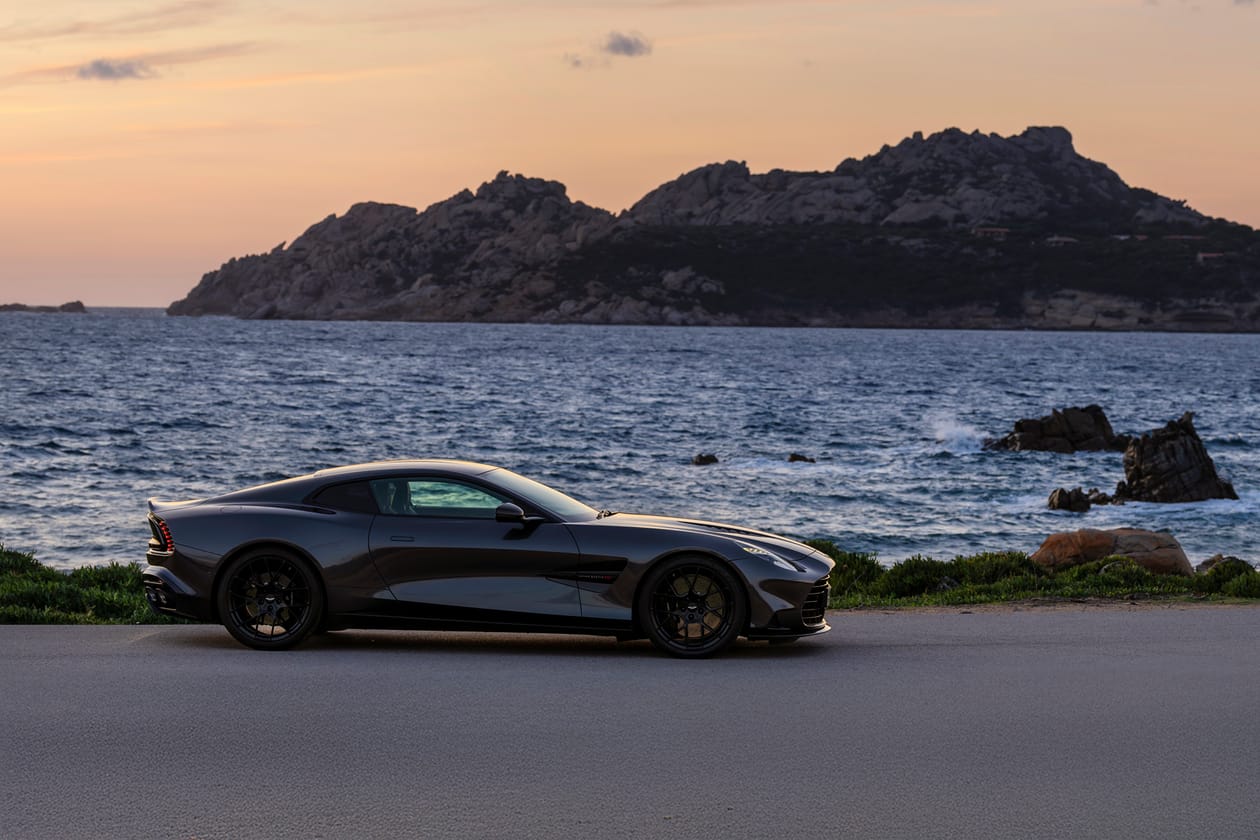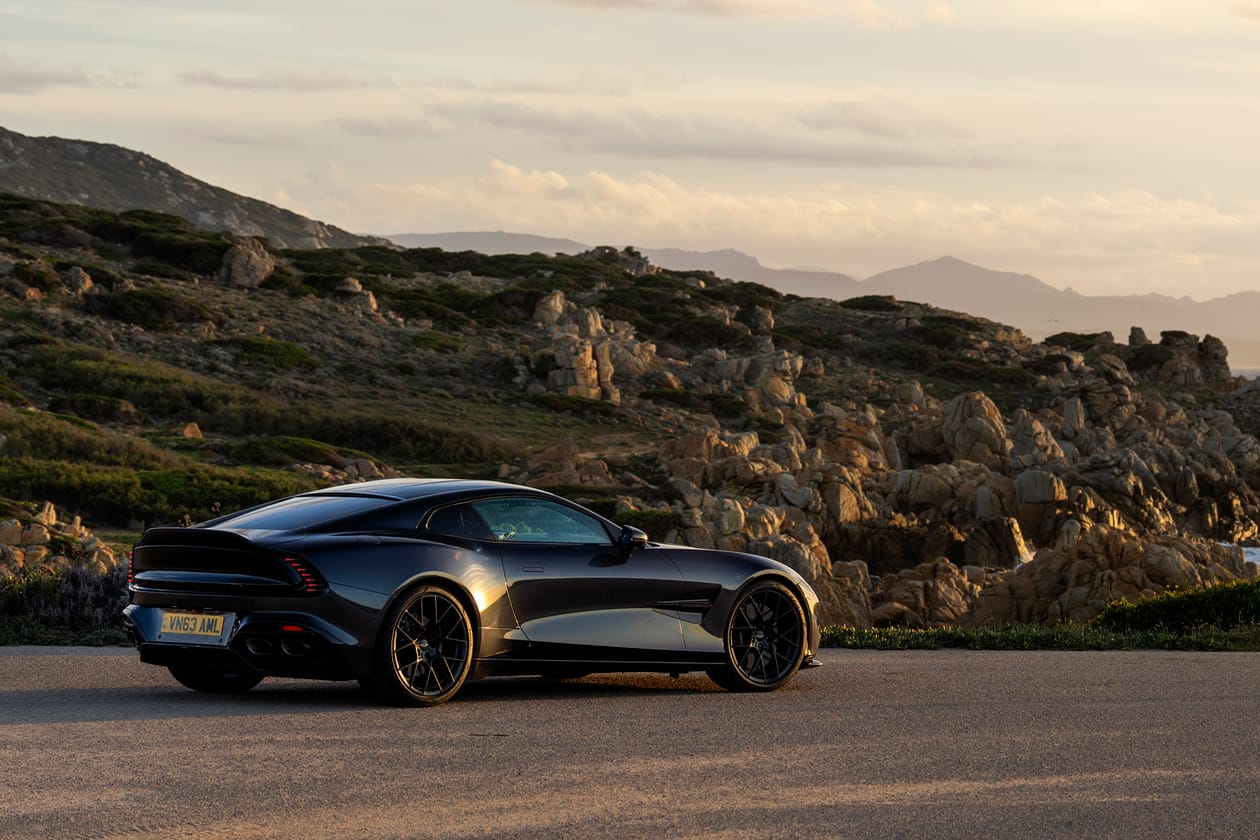What’s the defining characteristic of a V12 engine? Is it it’s inherit smoothness? Or is it its endless linear acceleration? If it’s either or both of these factors, would it be daft to say we don’t really need 12 cylinders if we have hybrids or even EVs?
Hear us out. We went to a private Test Drive in Sardinia, Italy to try out the brand new Aston Martin Vanquish. The namesake has been on a bit of a hiatus since 2018, when it had a 5.9L naturally-aspirated V12 engine; this new iteration brings back the dozen cylinders and slaps two turbos onto them for added shove at the lower end.
During our trip and subsequent drives, we couldn’t help but ask ourselves – haven’t we felt this surge of power, smoothness of execution, and mounting kinetic “oomph” before? We had, and it was in a couple of hybrid V8s in a selection of grand tourers. That’s not to say we didn’t enjoy what the Vanquish had to offer, but deep down we were a bit worried that what was just 60 inches in front of us and under our right foot has, in the last decade, been rendered obsolete.
If you’re already sold on hybrid power and the benefits it brings, we understand – you get what’s right for you and your life. But being petrolheads and enthusiasts of all things combustible, we wanted to highlight three key learnings we took away from driving the V12 Vanquish that – putting aside personal biases towards ICE – will sell us on the Vanquish time and time again.
With Great Character, Comes Great Responsibility
Let’s tackle the biggest and most obvious reason the V12 stands tall – the NVH (industry acronym for “noise, vibration, harshness”). Firing up the Vanquish’s twin-turbo 5.2L V12 engine had a satisfying rumble and vibration. While it didn’t sound like a volcanic explosion per se, it did put a grin on our faces with its deep growl and residual grumble at idle – a reaction we’d never have with an electric car. As we shifted to drive and let off the brake, the car’s take up was so immediate it felt like we had hit the gas by accident, when in fact it was just the cylinders and transmission’s eagerness to up and go. And while we were zooming down straightaways or carving fast corners, even the tiniest of jabs at the accelerator felt like a growing linear force of kinetic energy under our toes – a tall order in our digital “1s and 0s” age.
All of these “micro-feelings” concluded to the car’s personality – ”character” as you may want to put it. With electric cars and their digital propulsion or a hybrid setup, these minor emotions are missing, equating to a ride that feels at the end of the day subdued and dull. It’s cliché to say a car has “passion” or a “soul” and we’re one of the naysayers who cringe at these words, but this emotion is a real thing – when you drive, the chassis, engine, suspension, wind noise and more are all meant to evoke a response in you. The character in a car is something the sports car makers spend millions of dollars and countless hours attempting to retain and even enhance, and we’re glad the Vanquish didn’t neglect this vital process.
Buyer Be(a)ware
There’s something to be said about someone who buys something like this. They’re aware of the shifting world around us – they don’t live under a rock. And yet for an owner to decide on a V12 engine that’s counter to the evolution of electric world around them is a statement that’s made consciously and proudly. Aston Martin is also hyper aware of this as well.
No one will ever buy an Aston Martin Vanquish to “save the world.” They aren’t using words like “efficiency” and “eco-conscious” around their friends when talking about their latest purchase. Does this make them evil, in a world that needs saving? Of course not – they make it up in different ways (hopefully). But a Vanquish owner can not and will not compromise when it comes to the drive, and they need that reflected in the car.
That’s Aston Martin’s rationale to produce a new Vanquish with an internal combustion engine – “It was inconceivable that a new Aston Martin flagship should be powered by anything other than a state-of-the-art V12,” stated chief technical officer Robert Fedeli. AM representatives acknowledged the demands of its customers and understood the uncompromising views they have towards flagship ownership, and knew they’d be laser focused on the right product and the right execution; thus a synergy between company and client. So while Aston Martin may be “going against the grain” with government legislation and mandates (even though the Vanquish meets emissions standards), they are giving its buyers exactly what they asked for, because they know they won’t want anything else.
You’ll Miss Me When I’m Gone
Sure we are drawing comparisons between “old tech” and modern electrified powertrains, but one day these engines – specifically V12s – will be gone. For good.
Let’s take that statement seriously. V10s are pretty much a thing of a past, NA V8s are getting rarer and rarer, and even flat-sixes are now more or less reserved for the track. All we’ll be left with in terms of ICE will be turbo V8s and V6s, boosted four-cylinders and even a 1.6L 3-cyl. The world just doesn’t have room for V12s anymore – it’s like living in the apocalypse and expecting to find a juicy and tender ribeye.
Aston Martin’s insistence in creating a V12 Vanquish again is a remark on the unavailability of anything like this ever again. Sure, it has strict competition, but this is our moment to truly capture what we’ll miss when it’s gone. Aston essentially built a love letter to combustion, to displacement, to emotion and passion. For us to walk away from it and compare it to a hybrid or electric vehicle with 800+ horsepower and 700+ lb-ft of torque would be missing the point entirely. It would be eating the remaining blades of grass and saying it tastes like beef.
With a world moving forward, Aston Martin built a time machine to the past and somehow made it work in our modern day of restrictions and limitations. It’s something to applaud, not to compare.
